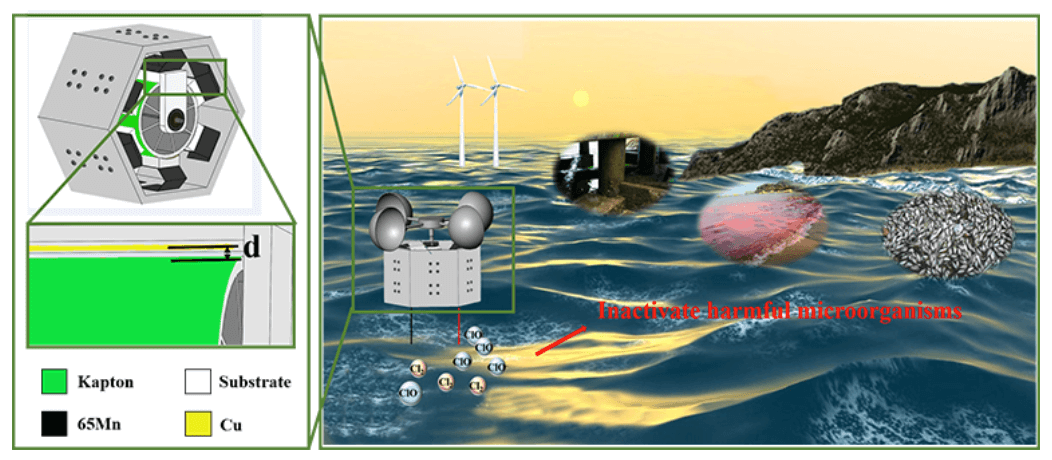Abstract
While marine microorganisms may pollute water bodies and cause biofouling of marine facilities, they can be effectively inactivated by electrolysis. The present study develops a wind-driving rotating direct current triboelectric nanogenerator (R-DC-TENG) by coupling the triboelectrification and electrostatic breakdown for the self-powered electrolysis. Such a R-DC-TENG can convert the wind energy into DC electricity through wind cup without any rectifier device more efficiently than the traditional alternating current (AC) method. At the wind speed of 10 m/s, one R-DC-TENG device can generate the open-circuit voltage of 450 V, and the short-circuit current of 11 μA. The corresponding electrolysis can produce the chlorine of 0.8 mg/L, within 60 minutes, which is used to inactivate microalgae. Multiple devices can be connected in parallel to generate sufficient DC electricity for the electrolysis of seawater. It is anticipated that the R-DC-TENG will have a good application prospect in inactivating microorganisms near coasts or small islands and preventing marine microorganism pollution in shallow seawaters.

